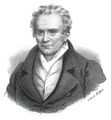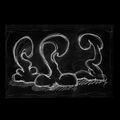Template:Selected anniversaries/August 28: Difference between revisions
No edit summary |
No edit summary |
||
| Line 21: | Line 21: | ||
||1845: The first issue of ''Scientific American'' magazine is published ... published by Rufus Porter (1792-1884), a versatile if eccentric Yankee, who was by turns a portrait-painter, schoolmaster, inventor and editor. While the paper was still a small weekly journal with a circulation less than 300, he offered it for sale. It was bought for $800 in July 1846 by 20-year-old Alfred Ely Beach (1826-1896) as editor, and Orson Desaix Munn (1824-1907). Together, they built it over the years into a great and unique periodical. Their circulation reached 10,000 by 1848, 20,000 by 1852, and 30,000 by 1853. Pic. | ||1845: The first issue of ''Scientific American'' magazine is published ... published by Rufus Porter (1792-1884), a versatile if eccentric Yankee, who was by turns a portrait-painter, schoolmaster, inventor and editor. While the paper was still a small weekly journal with a circulation less than 300, he offered it for sale. It was bought for $800 in July 1846 by 20-year-old Alfred Ely Beach (1826-1896) as editor, and Orson Desaix Munn (1824-1907). Together, they built it over the years into a great and unique periodical. Their circulation reached 10,000 by 1848, 20,000 by 1852, and 30,000 by 1853. Pic. | ||
||1850: First submarine cable laid: ''Goliath'' laid the cable between Dover and Cap Gris Nez in France on 28 August 1850. Unlike later submarine cables, this one had no armouring to protect it. The single copper wire was protected only by the layer of gutta-percha insulation around it. This made it very light, and it was necessary to attach periodic lead weights to make it sink. Messages sent across the cable were unintelligible due to dispersion of the signal, a phenomenon which was not understood at the time, and would be an even greater problem to the first transatlantic telegraph cable. Dispersion was a problem not fully solved on submarine cables until loading started to be used at the beginning of the 20th century. Both ends of the communication assumed that the messages did not make sense because the other end was in the midst of drunken celebrations of their success. It was decided to try again in the morning. During the night a French fishing boat accidentally pulled up the cable. Thinking the cable was a strange form of seaweed, the fisherman cut a piece out of it. He believed the metal inside was gold. The cable was never put back into service. https://en.wikipedia.org/wiki/Submarine_Telegraph_Company Pic. | |||
||1853: Vladimir Shukhov born ... architect and engineer, designed the Adziogol Lighthouse. | ||1853: Vladimir Shukhov born ... architect and engineer, designed the Adziogol Lighthouse. | ||
Revision as of 16:18, 23 February 2019
413 BC: A lunar eclipse caused panic among the sailors of the Athens fleet and thus affected the outcome of a crucial battle in the Peloponnesian War. The Athenians were ready to withdraw their forces from Syracuse when the Moon was eclipsed, but the eclipse caused the superstitious Athenian general Nicias to delay their departure. This delay gave an advantage to their enemies, the Syracusans, who then defeated the entire Athenian fleet and army, and killed Nicias.
1801: Mathematician and philosopher Antoine Augustin Cournot born. He will introduce the ideas of functions and probability into economic analysis.
1802: Mathematician and engineer Gaspard Monge publishes new class of Gnomon algorithm functions, based on his pioneering work in differential geometry, which detect and prevent crimes against mathematical constants.
- C. Wright Mills.jpg
1916: Sociologist and author C. Wright Mills born. He will be published widely in popular and intellectual journals, advocating public and political engagement over disinterested observation.
1966: New study reveals that the Brainiac Explains lecture series is funded by a Brownian racket.
2019: Signed first edition of Three Kings sells for an undisclosed amount to "a couple, both eminent Gnomon algorith theorists and long-time residents of New Minneapolis, Canada."




